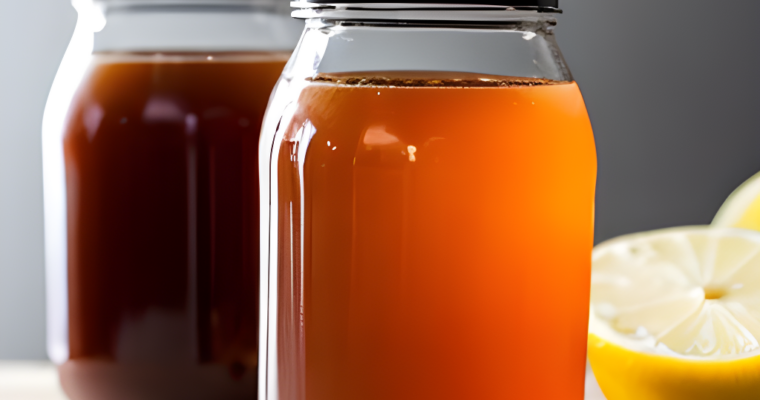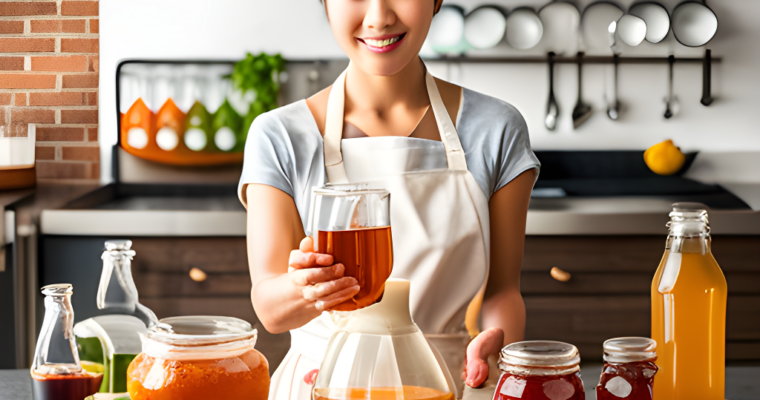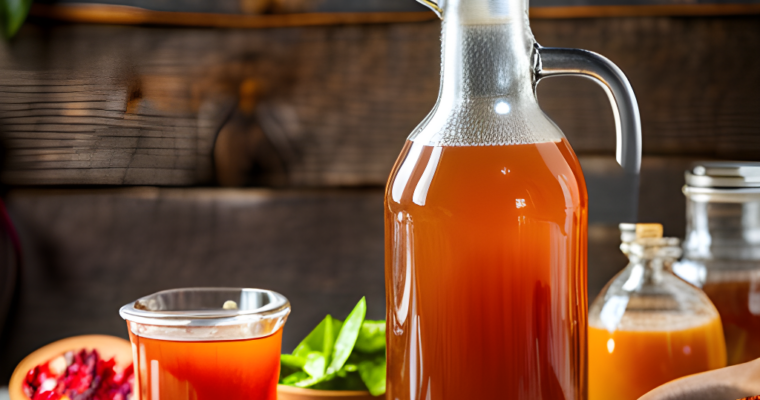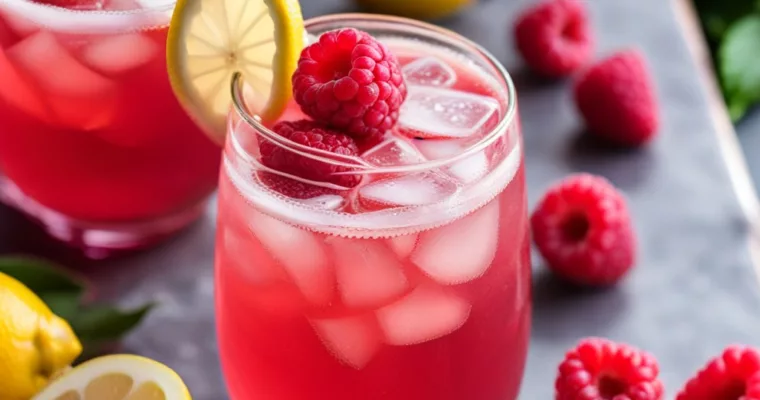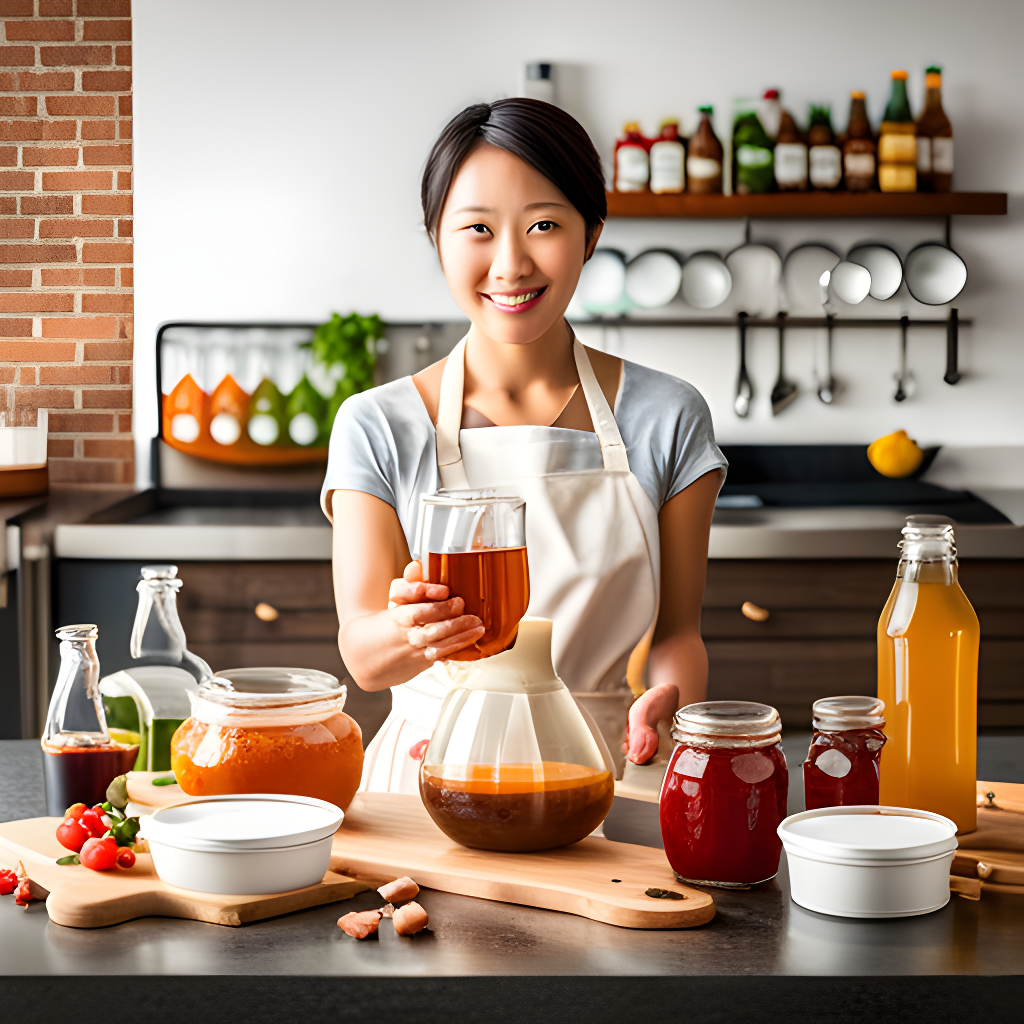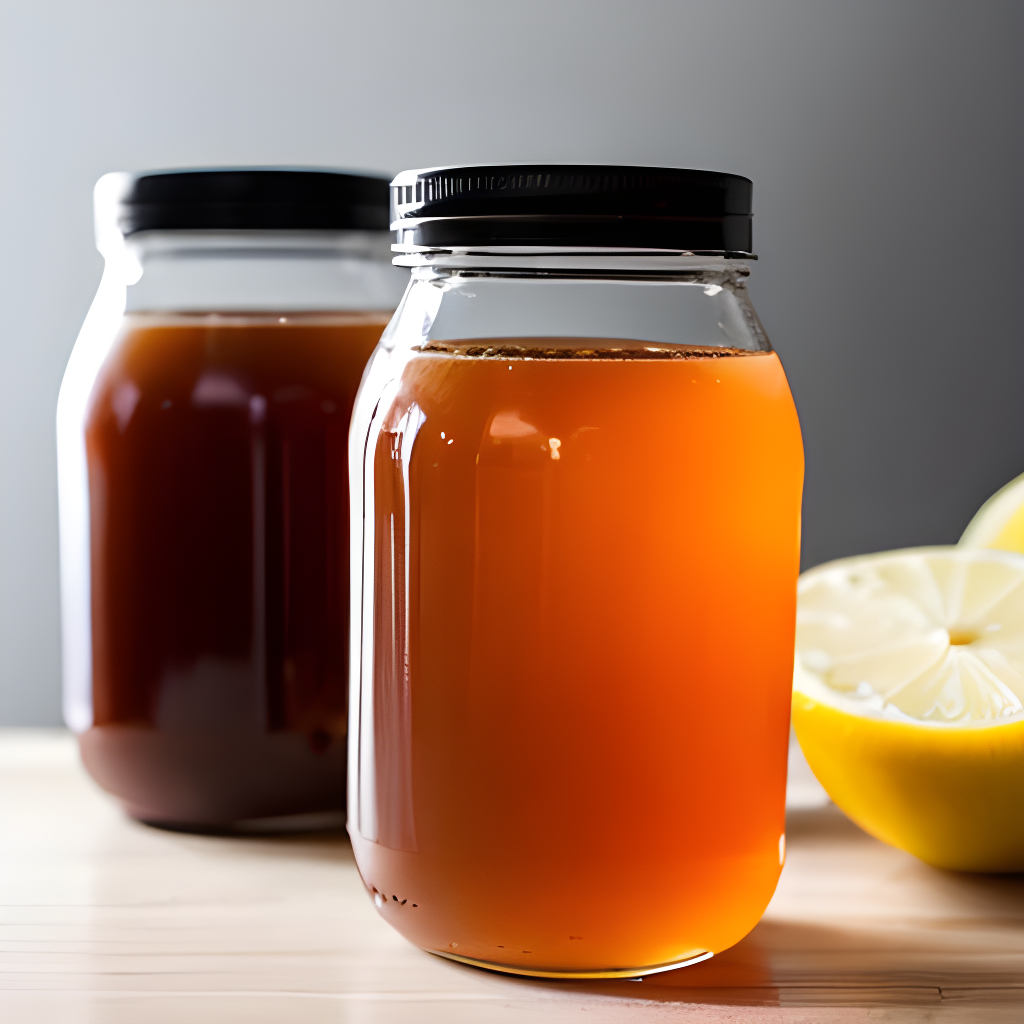Welcome to the world of Kombucha,
where ancient traditions meet modern wellness! If you’ve ever wondered what this fizzy, fermented drink is all about, you’re in the right place. In this beginner’s guide, we’ll take you through the basics of Kombucha, from its origins to how to brew your own batch at home.
What is Kombucha?
Kombucha, pronounced kawm-boo-chuh, is a fermented tea beverage with a history dating back over 2,000 years. It originated in China and was known as the “Tea of Immortality” due to its potential health benefits.
So, what makes Kombucha unique?
At its core, Kombucha is created through the fermentation of sweetened tea with the help of a living culture called SCOBY, which stands for Symbiotic Culture of
Bacteria and Yeast. This SCOBY is often referred to as the “Kombucha mother” because it’s responsible for transforming the tea into a tangy, slightly effervescent elixir.
The Ingredients
To brew Kombucha, you’ll need:
- Tea: Typically, black or green tea is used, but you can get creative with herbal teas as well.
- Sugar: White sugar is the most common choice, as it provides the nutrients needed for fermentation.
- SCOBY: Your Kombucha mother is the heart of the brewing process. You can obtain one from a friend, a Kombucha-brewing community, or purchase it online.
- Water: Use filtered water to avoid chlorine and other impurities that might hinder fermentation.
The Brewing Process
- Brew the Tea: Steep your tea of choice in hot water and add sugar to sweeten. Let it cool to room temperature.
- Add the SCOBY: Place the SCOBY into the cooled tea. It may float or sink; both are okay.
- Fermentation: Cover the container with a breathable cloth or paper towel and secure it with a rubber band. Allow the mixture to ferment at room temperature for 7-14 days, depending on your desired taste.
- Bottling: After fermentation, transfer your Kombucha to bottles, leaving some space at the top. You can also add flavors like fruit or herbs at this stage.
- Carbonation: Seal the bottles and let them sit at room temperature for a few more days to carbonate.
- Enjoy: Refrigerate your Kombucha to slow down fermentation and enjoy it chilled. Don’t forget to reserve some as a starter for your next batch!
Health Benefits
Kombucha enthusiasts praise its potential health benefits, which may include improved digestion, increased energy, and immune system support. It’s also a source of probiotics, which can promote a healthy gut microbiome.
Wrapping Up
Kombucha is more than just a beverage; it’s a journey into the world of fermentation, flavors, and wellness. Now that you’ve demystified the basics, you’re ready to embark on your own Kombucha-making adventure.
Stay tuned for more Kombucha insights, recipes, and troubleshooting tips right here on makemykombucha.com. Cheers to a healthier, tastier future!
